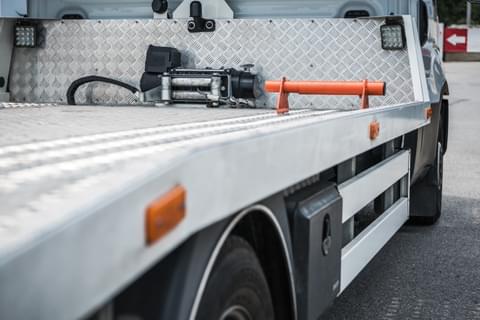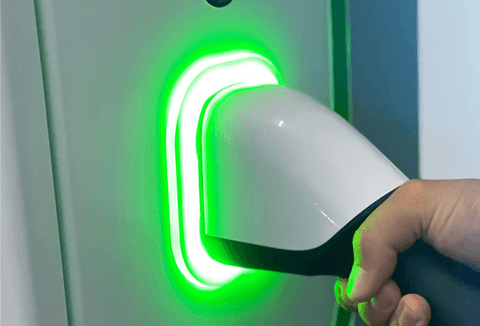
The increase in EV sales has fuelled a growing used EV market. 2023 saw used EV sales increase by 37.5%, and the year ended with an estimated 975,000 electric cars on the road in the UK (heycar). The more used EVs there are, the more they could need recovery. As a result, there is a growing concern especially around the safety of recovering broken down or damaged EVs where there is a risk of electric fire or arc flash.
The increasing number of vehicles that use electrified powertrains has brought with it a growing risk for recovery operators. One of those risks is arc flash, an explosion or discharge of intense light and heat caused by an electric fault, which can reach temperatures of up to 20,000°C.
The other risk is electric fires. Although less than 1% of all car fires involve an EV, putting out an electric car fire can take over five hours. Hybrid cars are more likely to catch fire than electric or ICE vehicles, and there is a risk of thermal runaway within the battery, one of the most common causes of EV fires.
Both electric vehicle fires and arc flash are risks to life. Anyone recovering EVs (especially when damaged in an accident) should take extreme caution and wear the correct PPE. But what should you be wearing to protect against electrical fires and arc flash?
Although there is uncertainty around PPE when recovering EVs, if you want to protect against both sets of risks, then arc flash PPE is the safest option. Not only is it inherently flame retardant, but also “arc rated”, so it will absorb the incident energy of an arc flash.


For recovery operators working with EVs, it is highly recommended that they are trained in understanding EVs. This includes their operation and awareness of the dangers they may pose when working with and around them.
It’s vital that there is a clear understanding of when and why the PPE you wear should change, especially if recovering a damaged EV. In this case, training should cover how to mitigate against hazards including chemical, electric shock, explosion and fire hazards.
Is FR & arc flash the answer? It depends on the situation. Most EV recoveries can be undertaken using conventional procedures and protective equipment. But for a damaged EV your risk assessment might conclude that you require PPE with higher levels of FR & arc flash protection.

FireBear FR & arc flash PPE is developed in collaboration with power companies SSE and SSEN. That means it’s been designed to protect people who work in some of the most dangerous working environments and harshest weather conditions on the British Isles. Simply put, it’s some of the most advanced PPE available for any organisation that faces electrical risks.
The more EVs are on the road, the more I hear people worried about electrical fires and arc flash. My advice is that although it’s important to do your own risk assessment and follow the hierarchy of controls whenever near a broken-down or damaged EV, it’s equally important to talk to an arc flash expert. They can calculate the level of protection and provide guidance on layering.
To find out more download our arc flash guide, EV PPE guide, or our latest FireBear catalogue.

Bruce works at the forefront of global requirements and is a leading authority on arc flash PPE. Bruce is also highly knowledgeable about the requirements of the Energy and Utilities industry.